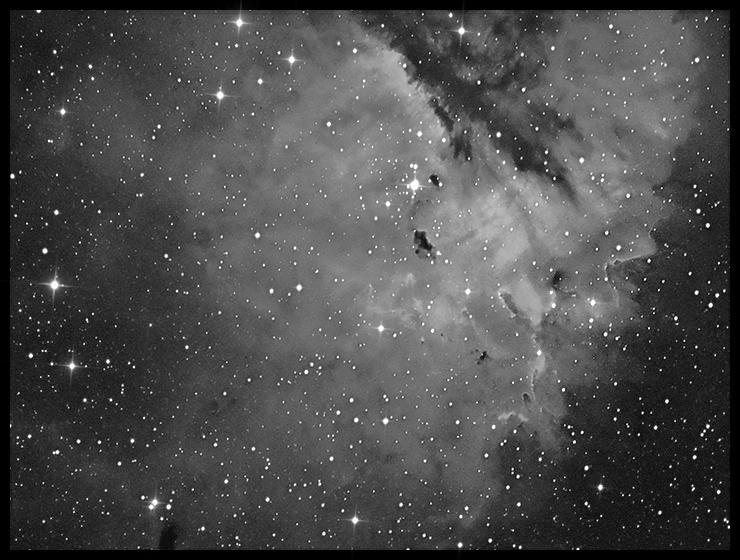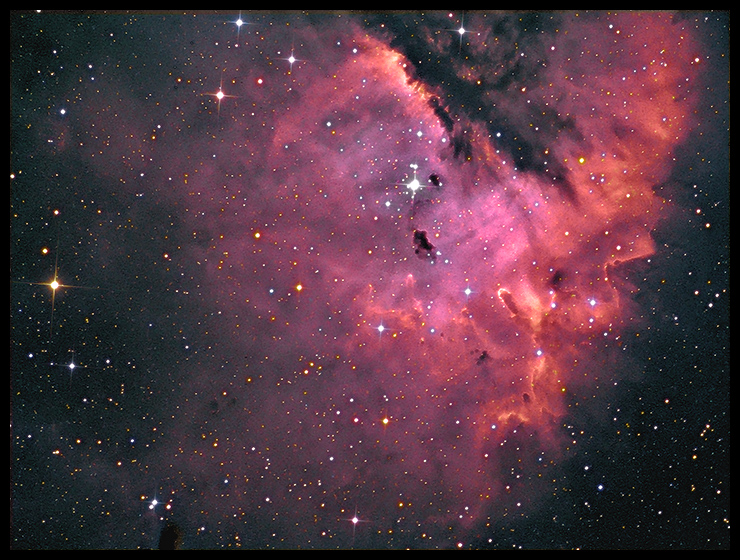12/29/2013. Tonight it's a young cluster and a faint nebula about 10,000 light-years away in the Perseus spiral arm: IC 1590 and NGC 281, the complex of bright and dark nebulae known in wider images as "the Pacman Nebula" in Cassiopeia. I started in deep twilight, trying to get lots of data collected before overcast moved in. Would've got more except I somehow neglected to plug in the controlling computer. It operated on battery power while I cooled the camera, lined up the subject, shot RGB data, and made three and three quarter deep hydrogen-alpha exposures. It died in the midst of my fourth long exposure. I managed to get everything restarted without much excitement and reshot the fourth frame, but after that the sky began to haze up. Satellite images show lots of moisture just over thataway and coming fast. (The guide camera can still see an 8th magnitude star so I'm continuing to take data, but I have no expectation of catching anything more worth using before the field hits the treeline or the sky shuts down). Still, one hour of RGB and two of H-a is not such a bad start:

IC 1509 & NGC 281
4x1800s H-a (2 hours)

IC 1509 & NGC 281
4x1800s H-a (2 hours)
8 x 150s, RGB (1 hour)
We know I'll be returning to this field when the sky clears up -- maybe tomorrow, maybe next week -- so let's leave it at this until then.
Except where noted, deep-sky photos are made with an SBIG ST2000XM CCD behind a 10-inch Astro-Tech Ritchey-Chretien carried on an Astro-Physics Mach1GTO. The CCD is equipped with Baader LRGB and 7nm H-a filters. The internal guide chip of the CCD most often keeps the OTA pointed in the right direction (I'll let you know when a Meade DSI and a separate OAG or guidescope takes its place). Camera control and guiding are handled by Maxim DL 5.12. The stock focuser on the AT10RC has been augmented with Robofocus 3.0.9 using adapters turned on the lathe downstairs. Maxim performs image calibration, alignment, and stacking; Photoshop CS4 and FocusMagic 3.0.2 take it from there. Gradient Xterminator by Russell Croman and Astronomy Tools by Noel Carboni see their share of work, too. Beginning in May 2013, PixInsight has taken over some of the heavy lifting for transfer function modification and deconvolution.
:: top ::